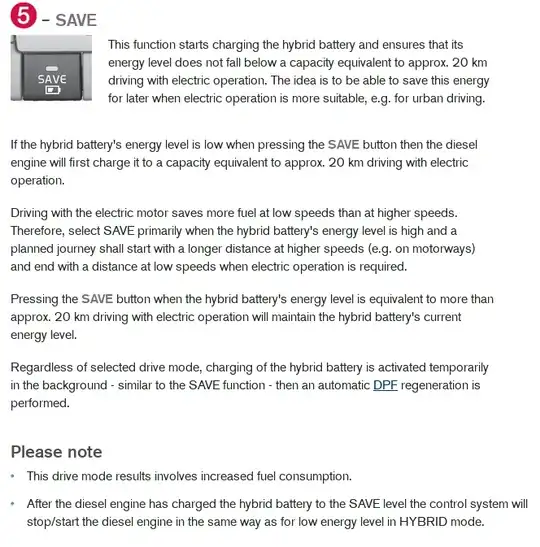I am likely to be forced to use a Volvo V60 in its hybrid diesel-electric plug-in version for my daily commutes. This is a hybrid system comprising a 2.4l diesel engine with an added plug-in electric motor (ERAD). The electric motor is powered by a 12 kWh lithium-ion battery pack which needs to be plugged-in the mains for ca. 8h to be fully charged. Ideally one would do this at night or at work during the day.
The problem is that I have nowhere to charge it on a daily basis. For starters my garage has no electricity. I can maybe try to find a plug somewhere in the garage at work but that's not a sure deal. Moreover, in the town where I live there are sparse charging spots near supermarket or in underground parkings. Therefore, if I end up getting this car I will be using mainly the diesel engine, and will rarely charge the battery.
I know I can drive the car using solely the diesel engine. The car will start and operate normally in this configuration. I am wondering however if never/rarely charging the batteries causes harm to the hybrid/electric engine system. Is this the case?
